Ibn Ishaq, Hadiths and early sources
A prime exhibit for the prosecution against Islam is Ibn Ishaq’s early biography of Mohammed, Sirat Rasul Allah (Life of the Messenger of God). Extant only in partial form in later works, it provides the principal source for the group of biographies known as the Sira. Alfred Guillaume compiled and translated it as The Life of Muhammad (here are edited highlights if you don’t have the time).
This is the verdict of the David Margouliath, the distinguished scholar of early Islamic history (or Orientalist, depending on your point of view), as expressed 100 years ago in the Encyclopedia of Religion and Ethics:
“The character attributed to Muhammad in the biography of Ibn Ishaq is exceedingly unfavourable. In order to gain his ends he recoils from no expedient, and he approves of similar unscrupulousness on the part of his adherents, when exercised in his interest. He profits to the utmost from the chivalry of the Meccans, but rarely requites it with the like.
He organizes assassinations and whole-sale massacres. His career as tyrant of Medina is that of a robber chief, whose political economy consists in securing and dividing plunder.
….This is a disagreeable picture for the founder of a religion, and it cannot be pleaded that that it is a picture drawn by an enemy; and though Ibn Ishaq’s name was for some reason held in low esteem by the classical traditionalists of the third Islamic century, they make no attempt to discredit those portions of the biography which bear hardest on the character of their Prophet.”
This last point no longer held by the time Margouliath was writing. He adds, regarding defences of Mohammed’s character which started appearing in the late 19th century:
“These apologists endeavour to discredit the biography of Ibn Ishaq where it shocks the European reader…”
This is also the case today. I have found that whenever I raise Ibn Ishaq in discussion with Muslims, or sometimes even with non-Muslims, they immediately cry foul because, so they claim, Ibn Ishaq cannot be trusted. They object that it is unfair to blacken Mohammed’s name with unreliable stories of atrocities ordered by him.
In this blog post I do not aim to prove Ibn Ishaq correct in all his accounts; that would be impossible. Rather, I want to show that the picture he provides, of Mohammed as a cruel, merciless warlord, is consistent firstly with the Hadiths and secondly with the earliest independent accounts of him.
1. The Hadiths
In this document a defender of Mohammed’s good name called Ehteshaam Gulam brings forward a selection of the charges made against ibn Ishaq’s reliability including the two that always crop up, that he used reports from Jewish sources (which were likely to be both hostile and fabricated) and that the isnads (chains of transmission) for his stories about Mohammed are defective.
a. In Section #4 Gulam provides 9 stories of killings on Mohammed’s orders which appear in ibn Ishaq but not in the sahih (ie reliable) Hadith collections. He also adds the story of Kinana, whose killing is not denied but only the torture by fire before his decapitation (in terms of mitigation that must rank alongside “I shot the Sheriff but I did not shoot the deputy”).
Personally, I wouldn’t put any credence on stories, either from the Hadiths or the Sira, which had been handed down by word of mouth over a minimum of 125 years. Anyone who has played a game of Chinese whispers around a dinner table will understand why. But Muslims take a different view. As Gulam says “Muslims follow the Quran and the Hadith 100%”. That being so, let us compare the Hadiths and ibn Ishaq in terms of the brutality which Muslims claim should not be ascribed to Mohammed.
WikiIslam is an ex-Muslim run site which is a mine of information about the Islamic scriptures. Islamic apologists will automatically scoff at the mention of it but I find it to be scrupulous in its attributions, something I rarely find from those apologists themselves. Here is WikiIslam’s collection of killings ordered by Mohammed, with sources. You can even look up the individual Hadiths concerned via the links provided.
b. In the WikiIslam list we find 13 such stories which figure in both ibn Ishaq and the Sahih Hadith collections.
As a representative example, number 5 in the list is the assassination of Ka’b ibn al-Ashraf. Here we can see Bukhari and Muslim (the two most trusted of sahih Hadith collectors), the historian al-Tabari, and ibn Ishaq combining to tell the kind of tale which engenders revulsion for Mohammed in normal people.
Number 12 is the infamous slaughter of 600-900 captured men of the Banu Qurayza tribe. WikiIslam does not cite ibn Ishaq directly but you can find it in Guillaume on pp461-466.
Number 42 is the torture and killing of Kinana.
c. In the WikiIslam list we also find 9 such stories which figure in the sahih Hadith collections but not in ibn Ishaq.
Number 15 surpasses even the story of Kinana in horror. Eight men from Ukil stole some camels from Mohammed. He ordered their hands and feet to be cut off. Their eyes were branded with hot metal and they were left in a desolate place to die.
The rest are everyday assassinations and executions apart from number 43 in which Mohammed sends a force to destroy the Kaaba of Yemen, killing 300 tribesmen in the process.
What are we to make of all this?
We can see that the stories which only appear in ibn Ishaq are no worse than the stories which appear in both ibn Ishaq and in the Hadiths, or those which appear only in the Hadiths. They consist, largely, of assassinations and executions of those who crossed Mohammed or mocked him. The Perfect Man appears to have been remarkably thin skinned and vengeful, just like Allah in fact.
The two exceptions are the stories involving torture. Gulam writes:
“That a man [Kinana] should be tortured with burns on his chest by the sparks of a flint is too heinous a deed for a Prophet (Peace and blessings of Allah be upon him) who had earned for himself the title of Rahma’lil Alamin (Mercy for all the worlds)”.
Yet the hideous torture of the eight men of Ukil cannot be too heinous a deed for him because it is attested to by Bukhari. If I ever bump into Ehteshaam Gulam I will ask him how he reconciles these two accounts of the Mercy for all the worlds.
I think the above shows that Ibn Ishaq is entirely consistent with the Hadiths regarding Mohammed’s cruelty, and that the crucial difference between the two is only that Ibn Ishaq is more coherently presented as a narrative. That means it will be more likely to convince the general reader and therefore represents a greater threat to Mohammed’s reputation. There must then be a greater incentive for Islamic apologists to attempt to counter the likely effect of the message by undermining the messenger.
2. The Early Sources
The following are the three earliest accounts of Mohammed given by non-Muslims. I believe they speak for themselves.
a. The Didaskalia of Jacob, otherwise known as the Doctrina Jacobi, is a Greek Christian tract set in Carthage in 634 AD. According to the ground-breaking scholars of the origins of Islam, Patricia Crone and Michael Cook, it was written in Palestine shortly after that date.
The Sneakers Corner channel explores the tract’s background and supports its claimed credibility in this video.
Here is the text itself, and this is the relevant passage for our purposes (p99-100):
….Abraham my brother has written to me that a deceiving prophet has appeared:
“For at the time when (Sergius) the Candidatus [ie Byzantine general] was slaughtered by the Saracens I was in Caesarea”—Abraham says—”and I went out by boat to Sykamina. And they said: the Candidatus was slaughtered. And we Jews rejoiced greatly. And they said that a prophet appeared, coming with the Saracens and he is proclaiming the arrival of the coming Anointed One and Christ. And when I went out into Sykamina I communicated it to a certain very scriptural old man and I said to him: ‘What do you say to me about this prophet who is appearing with the Saracens?’ And with a great groan he said: ‘He is a deceiver. Do prophets come with swords and chariots? Really these are works of disorder set in motion today, and I fear that the Christ who came earlier, whom the Christians worship, was the one sent by God and instead of him we shall accept Hermolaos [ie the anti-Christ]. For Isaiah said that we Jews have a mistaken and hardened heart, until all the land is made a desert. But go forth, Mr. Abraham, and learn about this prophet who is appearing.’ And I, Abraham, thoroughly investigating, heard from those who met him that you find nothing true in this so-called prophet, except shedding human blood. For he says that he has keys of Paradise which is unbelievable.“
b. The Fragment on the Arab Conquests
This consists of fragmentary notes that were written on the blank front pages of a Syriac Christian manuscript of the Gospel of Mark around the year 636 AD.
Here is what Sneakers Corner has to say on the Fragment, This is the actual text which concerns us:
In January {the people of} Ḥomṣ took the word for their lives and many villages were ravaged by the killing of {the Arabs of} Mūḥmd and many people were slain and {taken} prisoner from Galilee as far as Beth…
On the tw{enty-six]th of May the Saq{īlā}ra went {…} from the vicinity of Ḥomṣ and the Romans chased them {…}
On the tenth {of August} the Romans fled from the vicinity of Damascus {and there were killed} many {people}, some ten thousand. And at the turn {of the ye}ar the Romans came.
On the twentieth of August in the year n{ine hundred and forty-}seven there gathered in Gabitha {a multitude of} the Romans, and many people {of the R}omans were kil{led}, {s}ome fifty thousand.
Note that the curly brackets denote illegible or nearly illegible words. Also that the Fragment places Mohammed in Palestine in year 947 of the Seleucid Greek calender, or 636 AD, whereas Muslim histories claim that he died in 632 never having broken out of Arabia.
c. Thomas the Presbyter
Thomas the Presbyter (ie the leader of a congregation) was a monophysite Christian whose manuscripts are preserved in the British library of Syriac Manuscripts.
Sneakers Corner introduces the account in the first three minutes here. The rest of the video concerns a scholarly spat which is of no direct interest to us.
This is the relevant text:
In the year 945 [ie 634 AD], indiction 7, on Friday 4 February at the ninth hour, there was a battle between the Romans and the Arabs of Muhmd in Palestine twelve miles east of Gaza. The Romans fled, leaving behind the patrician bryrdn, whom the Arabs killed. Some 4,000 poor villagers of Palestine were killed there, Christians, Jews and Samaritans. The Arabs ravaged the whole region.
In the year 947 [ie 636 AD], indiction 9, the Arabs invaded the whole of Syria and went down to Persia and conquered it. The Arabs climbed the mountain of Mardin and killed many monks there in [the monasteries of] Qedar and Bnata. There died the blessed man Simon, doorkeeper of Qedar, brother of Thomas the priest.
(As an aside, it seems Mohammed’s forces at Mt Mardin didn’t get the memo about protecting and defending Christians in general and monks in particular. See here for further details).
Conclusion
We see that Ibn Ishaq, the Sahih Hadiths and the earliest independent sources are all aligned in portraying Mohammed as a brutal, rampaging warlord.
When Islamic apologists next complain about my bringing forward Ibn Ishaq as evidence, I shall ask them to explain how the character of Mohammed presented in his biography differs from the one we find in the Muslim sources (which they believe) and the non-Muslim sources (which I believe). In the meantime I feel justified in regarding the Sirat Rasul Allah as a reliable part of the Islamic tradition.

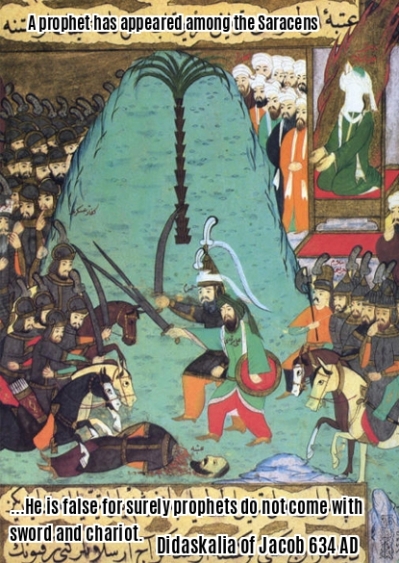
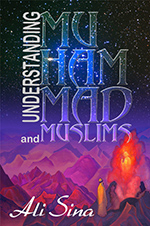
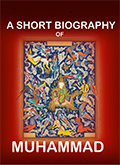
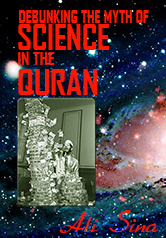
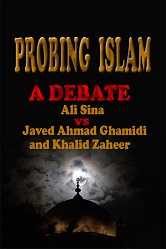
Recent Comments